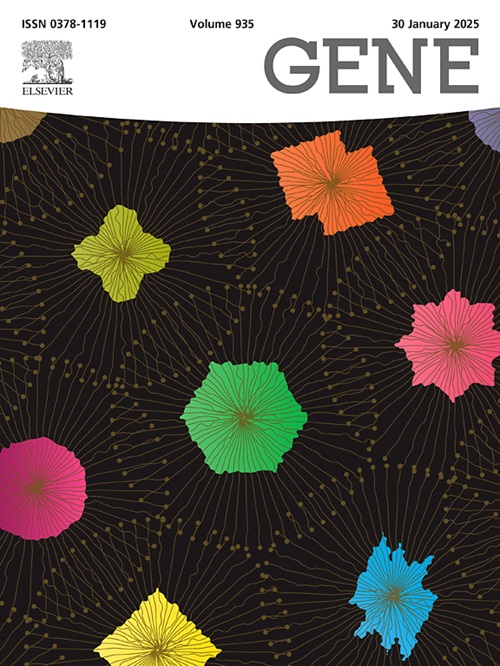Molecular characterization of PANoptosis-related genes as novel signatures for peripheral nerve injury based on time-series transcriptome sequencing
IF 2.4
3区 生物学
Q2 GENETICS & HEREDITY
引用次数: 0
Abstract
Programmed cell death (PCD) pathways play pivotal roles in the development and progression of peripheral nerve injury (PNI). PANoptosis, as a novel form of PCD pathway with key features of pyroptosis, apoptosis and necroptosis, is implicated in the pathogenesis of multiple neurologic diseases. This study aimed to identify PANoptosisrelated biomarkers and characterize their molecular roles and immune landscape in PNI. PANoptosis-related genes (PRGs) were retrieved from Reactome pathway database and previous literatures. Differentially expressed PANoptosis-related genes (DEPRGs) were identified based on a time-series transcriptome sequencing dataset. DEPRGs were predicted to be enriched in inflammatory response, inflammatory complex, PCD and NOD-like receptor signaling pathway through GO, KEGG, Reactome and GSEA analysis. Hub genes, including Ripk3, Pycard and Il18, were then recognized through PPI network and multiple algorithms. The molecular regulatory mechanisms of hub genes were elucidated by transcription factor network and competing endogenous RNA network. Moreover, the immune cell landscape of hub genes was analyzed. Eventually, the expression levels of hub genes were verified through external dataset and animal model. Ripk3, Pycard and Il18 were remarkably upregulated in PNI samples, which were in consistent with the results of bioinformatic analysis. This study uncovered the molecular characterization of PANoptosis-related genes in PNI and illustrated the novel PANoptosis biomarker for PNI.
基于时间序列转录组测序的 PANoptosis 相关基因的分子特征,作为周围神经损伤的新特征。
程序性细胞死亡(PCD)途径在周围神经损伤(PNI)的发生和发展过程中起着关键作用。PAN凋亡是一种新型的程序性细胞死亡途径,具有热凋亡、细胞凋亡和坏死的主要特征,与多种神经系统疾病的发病机制有关。本研究旨在鉴定与 PANoptosis 相关的生物标志物,并描述它们在 PNI 中的分子作用和免疫格局。研究人员从 Reactome 通路数据库和先前的文献中检索了与 PANoptosis 相关的基因(PRGs)。根据时间序列转录组测序数据集确定了差异表达的泛凋亡相关基因(DEPRGs)。通过GO、KEGG、Reactome和GSEA分析,预测DEPRGs富集于炎症反应、炎症复合物、PCD和NOD样受体信号通路。然后通过PPI网络和多种算法识别了包括Ripk3、Pycard和Il18在内的枢纽基因。转录因子网络和竞争性内源RNA网络阐明了枢纽基因的分子调控机制。此外,还分析了枢纽基因的免疫细胞图谱。最后,通过外部数据集和动物模型验证了枢纽基因的表达水平。Ripk3、Pycard和Il18在PNI样本中显著上调,这与生物信息学分析的结果一致。这项研究揭示了 PNI 中 PANoptosis 相关基因的分子特征,并阐明了 PNI 的新型 PANoptosis 生物标志物。
本文章由计算机程序翻译,如有差异,请以英文原文为准。
求助全文
约1分钟内获得全文
求助全文
来源期刊

Gene
生物-遗传学
CiteScore
6.10
自引率
2.90%
发文量
718
审稿时长
42 days
期刊介绍:
Gene publishes papers that focus on the regulation, expression, function and evolution of genes in all biological contexts, including all prokaryotic and eukaryotic organisms, as well as viruses.
 求助内容:
求助内容: 应助结果提醒方式:
应助结果提醒方式:


